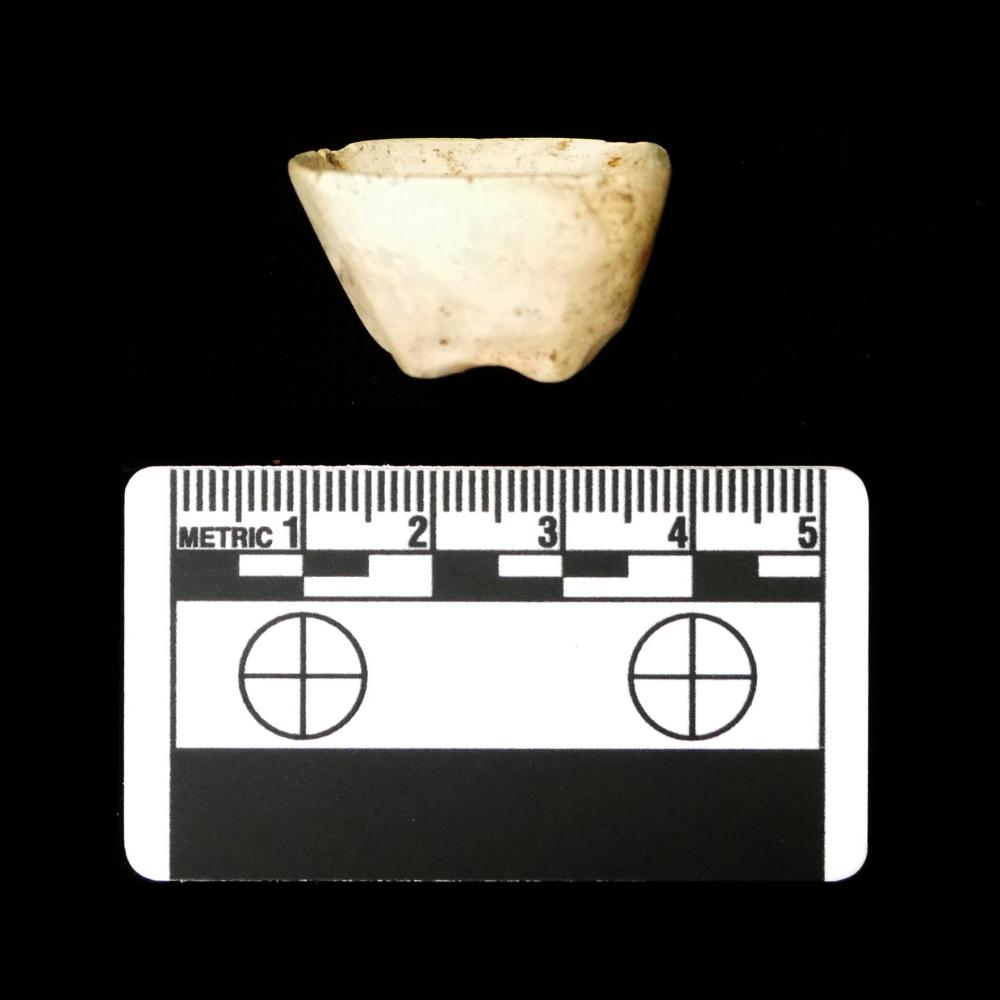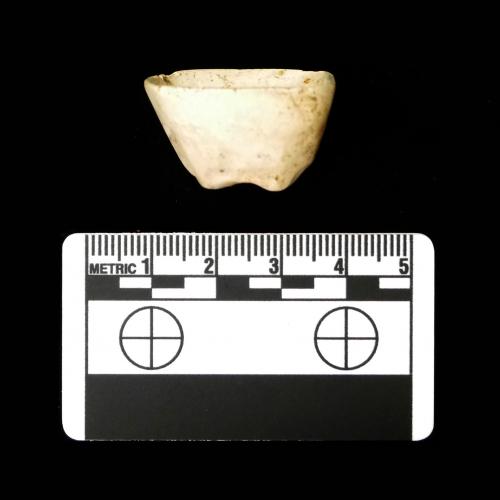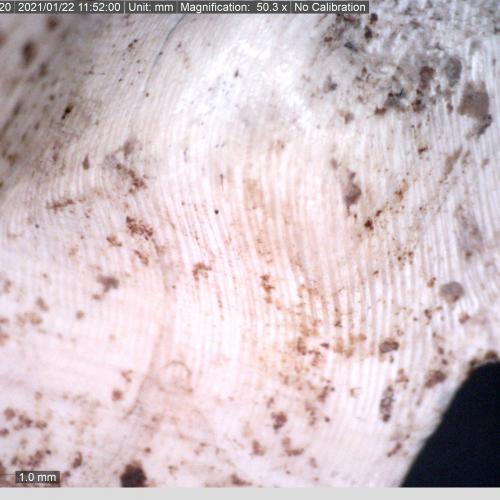Many of the Historical Archaeology Collections at the New York State Museum were recovered during compliance work prior to the construction of roads, buildings, and other structures. Larger compliance projects can result in the recovery of 100,000 artifacts or more. Time and budget constraints often limit the number of artifacts that can be studied in detail, and thus, close examination of artifacts from old collections can provide new information about the past not realized in the initial reporting.
An example of this includes artifacts recovered from the basement of an Albany house that burned in 1797. Under the burned floor were hundreds of artifacts most likely used, discarded, or lost by enslaved African Americans living in the basement. Among these artifacts was a small footed cup listed in the catalog as a ceramic crucible. A closer look at this artifact under the microscope revealed the calcium carbonate layers indicative of shell. Abrasion marks are also visible where the four feet of the vessel were carved out of a large conch or similar shell. It is uncertain what this handmade object was used for, but it was clearly more personal than a ceramic crucible. This artifact, along with many others found in the basement, represent the personal possessions of enslaved African Americans that are rarely identified in urban settings.






